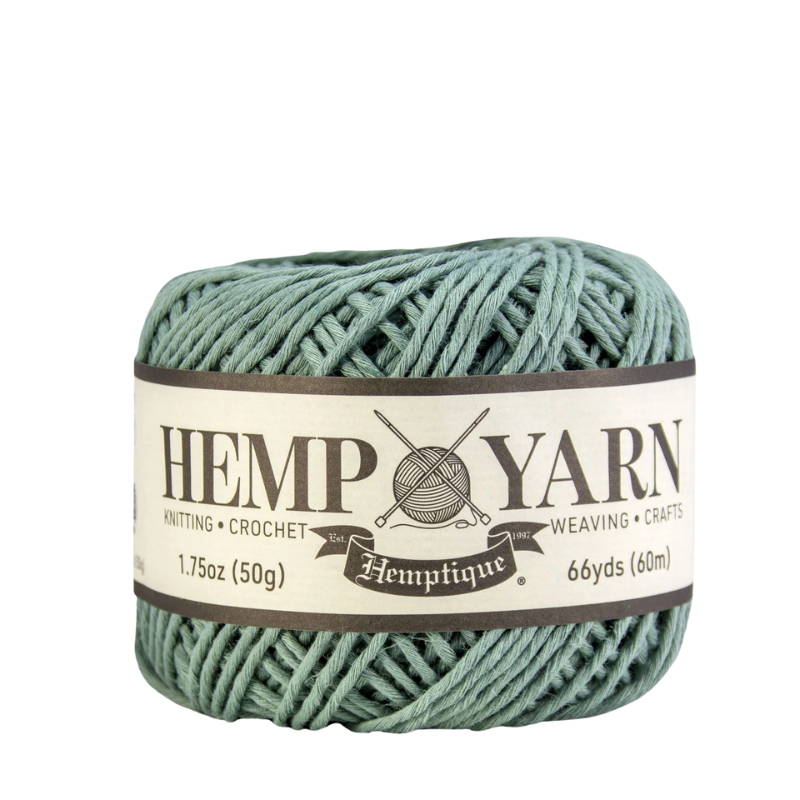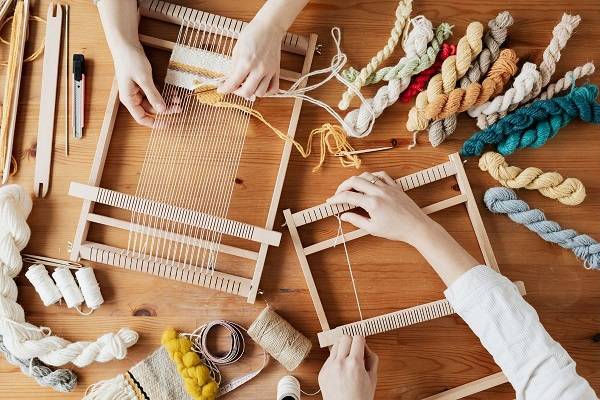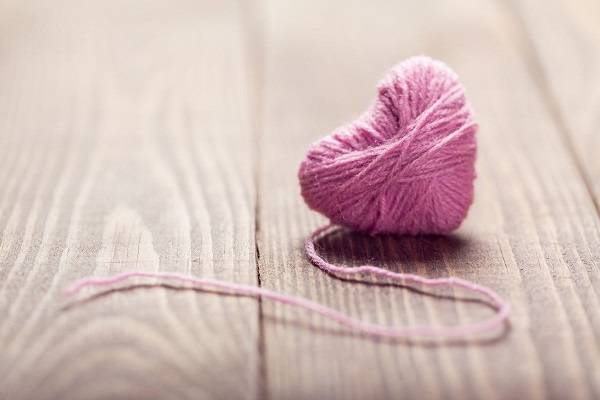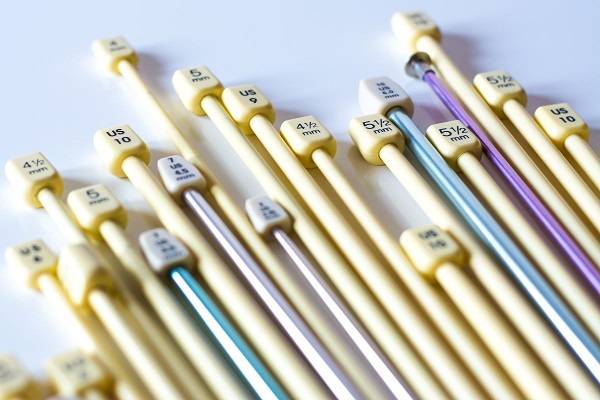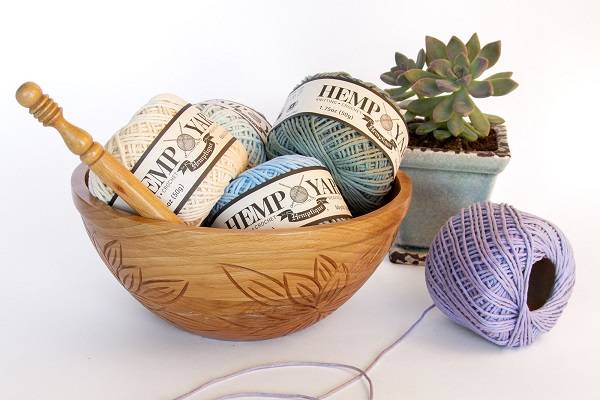How To Select the Right Yarn For Weaving
Tips On Choosing Warp & Weft Threads Best Suited For Your DIY Loom Project
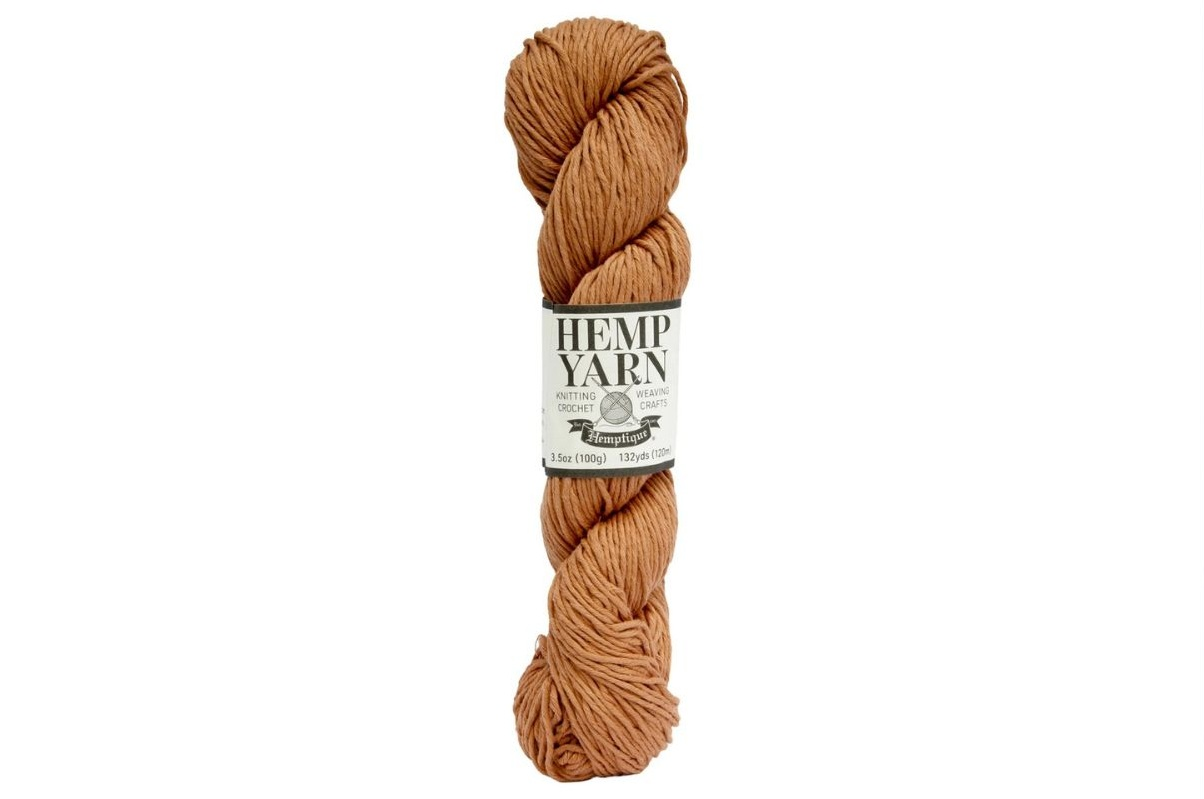
Innovation & Quality
Developing and supplying premium-quality, sustainably grown, consumer products
100% Natural
Organically Grown and Ethically Sourced
hemp and other natural fiber products
Shipping
We offer fast shipping
Your order out within 1-3 days
Wholesale
Visit our wholesale portal to register or login to your account
Although some people may think that any yarn can be used for any weaving project, that is not entirely true. The reality is that if you want your finished item to look good and last a long time, you should ensure it’s made with adequate material.
In order to determine what type of string fits your project’s requirements best, you should be mindful of important factors that can influence the final result. Major elements to take into account when choosing warp and weft yarn are project requirements and fiber features like material, yarn strength, and size. All these details impact the quality of the finished woven product.
Shop Fine Quality Weaving Yarn at Hemptique
Hemptique, as a proud supporter of eco-conscious manufacturing, fosters sustainability on global level by supplying hobbyists and crafters around the world with naturally sourced cord supplies for a wide range of DIY projects. Our best selling products for weavers feature yarns made of premium fiber carefully sourced using mechanical processing of industrial hemp and linen. Our assortment includes heavy worsted hemp yarn blend, hemp natural yarn (3-ply, 6-ply, and 12-ply), premium linen cord (#10, #20, #48), hemp yarn bon bons, and many others. Our weaving supplies are durable, strong, and soft, suitable to be used as both warp and weft yarn in weaving. Hemptique’s yarn will improve your crafting experience as well as your item’s functionality, strength, and looks. For more information, contact us at (760) 602-4864, ext. 402 & 405, apply for a wholesale account, or send a bulk order request.
Warp Vs Weft Yarn – What’s The Difference?
Before moving on to yarn recommendations, it’s important to get familiar with some basic terminology in weaving, so it’s easier for you to understand how to make your choices.
Warp
“Warp” is the foundation of your woven cloth. It refers to long threads that are held vertically under tension on a frame. They are laid down first and have to be strung up tight since they represent the ‘structure’ of the fabric. Warp should be stronger than weft, particularly if you are working on tapestries and will beat treads a lot. In weaving, ‘beating’ refers to firmly pressing the yarn into its place to accomplish even consistency and polished look. Because of this it’s best to choose strong, smooth, plied thread that could withstand the tension and retain their shape after stretching or washing. Cotton is the safest choice for beginners, while more experienced weavers may choose linen, wool or silk, which offer greater versatility and texture.
Weft
“Weft” (or ‘woof’) is the horizontal yarn that passes over and under the ‘warp’ to create fabric. Using different interlacing techniques and strings of various colors you are able to make different patterns and textures. This is where you can experiment and get creative with your design. Weft is typically softer than warp, although you still need to think about the end item. If the item is not meant to be used a lot (e.g. wall decoration), essentially, you may use any type of yarn. However, if it’s going to be used and washed a lot, it’s advised to work with stronger fiber that can endure prolonged wear and tear. For balanced weave, choose similar weight and texture for both weft and warp threads, and if you want more textured fabric, opt for novelty yarns.
Interlacing Warp and Weft
Combining these two components creates fabric, so it’s important to pick materials that work well together. Textured warp goes well with smooth weft, while vibrant colored warp should be paired with a more subdued weft. If you are unsure of how to combine them together, weave a small sample to see how you like it and whether it’s what you ultimately want.
Choosing Warp Yarn
The type of thread you choose for warping depends on things like the loom you’re using, the end use of the fabric you’re crafting, and number of ends per inch (epi). Below, you’ll find our recommendations on best warp yarn, but they can be also used as weft.
What’s good warp string?
A good warp string should be strong, so it doesn’t break under tension. It should also be smooth with minimal stretch, particularly if you are using rigid heddle loom or floor loom. This is because the cloth that is being created on floor loom undergoes a lot of friction when it’s beat down. If the warp thread is not smooth, it has the tendency of catching on the reed that separates and spaces the threads, or even break down after a while. If it’s too stretchy, there’s an increased chance of tension issues and uneven texture of finished item. The exception to the rule above are slub yarns.
How to test fiber strength?
To test whether the tread is strong enough for warping, snap it hard between two hands to see how easy (or hard) it breaks. Any yarn that does not easily snap should be suitable for warping. If it quietly breaks it’s probably not the best choice.
What is ‘epi’?
The epi means ends per inch. It denotes a number of individual warp threads in inch of your fabric. For instance, if you have an epi of 10, you’ll use a 10-dent reed. The higher the epi number, the finer the thread should be used, and the denser and tighter fabric is created. For instance, a drapey scarf will have an epi of 12, while a finely woven napkin may have an epi of 24.
Choosing warp yarn based on your skill level
When deciding on what type of fiber to obtain, think of the characteristics of the fiber, comfort levels, and your weaving style. In the beginning, stick with cotton, cotton blends and wool, and over time, as you improve your skills, you can move on to silk, linen, or novelty yarns.
- Beginner-friendly warp yarns - Cotton (and cotton blends), bamboo, and wool yarns are easy to work with, which is why they are suitable for beginners. Plus, they are very versatile, come in different sizes (thick, medium, fine), and can be used with most types of looms, including frame looms, rigid heddle looms, and floor looms.
- Intermediate crafters - Linen, silk, and hemp are recommend for individuals who have already perfected the basics of the floor loom crafting. Although linen is very common to use because it’s very forgiving, if you are a beginner on floor loom, we don’t recommend using it as warp, only because it takes a little practice to tension it correctly on the loom.
- Advanced level - Novelty yarns such as bouclé, seed, or flake, can be very hard to tension correctly simply because they are not traditional yarns. For this reason, it’s better to experiment with them after you have perfected your skills. They are mostly used for wearable items such as scarves or shawls to add interest into the design, or as fringe on tapestries. Because they tend to be chunky and do not fit reed or heddle, it can be difficult to use them as warp unless you are working on basic frame loom.

How To Choose Proper Weft Yarn?
Since weft doesn’t undergo as much tension as warp, when shopping for weft thread you can focus on design, texture and color. This is where you can get creative, and here’s a few guidelines on how to choose the best weft yarn:
- If you are making an item that will experience a lot of use (upholstery, rugs), ensure weft is also strong enough to endure daily wear.
- For even weave, choose similar weight and texture to warp yarn
- If you want to add dimension and more texture, opt for novelty yarns like bouclé, chenille yarns, or flake yarns
- Combine contrasting colors for bold patterns, and complementary colors for subtle design
- For unique designs and artistic look, combine weft yarns of various properties
- Popular weft yarn types include linen, wool, Alpaca, Mohair, cotton, cotton slub, brassard cotton
How Does Project Type Determine What Yarn To Use
When choosing thread for your fabric crafting task, the first thing that you need to consider is what kind of interlacing you intend to do. The braiding style hugely affects what type of string you will need in order for your handicraft to be effective.
- Tapestry, rugs, upholstery – These types of textiles require you to beat weft fibers very hard, which is why you need a pretty strong fiber with high tensile strength, designed specifically for being held under tension. The strongest natural fibers available include linen, wool, and hemp.
- Home textiles - When crafting placemats, kitchen towels and other textiles for the home, you should choose durable, but soft yarn that is machine washable and can easily withstand the tension during the creation process and years of use. A great example is blend of cotton and hemp. Cotton gives softness, while hemp ensures exceptional strength and durability. There are also those with polyester or nylon blended into yarn, but they are not sustainable or eco-friendly, so they may not be the best choice for individuals who are looking to make a positive ecological impact.
- Scarves, shawls, and fashion accessories - If you are designing a headband, a scarf, or a shawl, the thread does not have to be as hard as the one used for rugs, because you will not be pressing the weft so hard, but still strong enough to handle the tension. If you are looking for a more structured item, get linen yarn, and for a more flowy drape, choose soft and pliable silk or wool.
Types Of Fibers & Their Main Properties
In this section, we will talk about the characteristics of different types of fibers. Below, we have a summary on natural (animal and plant sourced) and synthetic fibers’ features for you to use as reference when shopping for supplies for your next project.
Plant-based fibers
Plant fibers, as the name implies, are derived from various parts of plants including stems, leaves, seeds, and fruits. Their main component is cellulose, which makes them absorbent, strong, and breathable. Compared to animal based fibers, they are stronger and less stretchy. They are mainly used to craft apparel and home textiles and are easy to care for. Examples include hemp, cotton, linen, and jute.
- Hemp – Hemp yarn is made from bast fiber, and is one of the strongest plant sourced materials available. Because it’s less flexible than some other fibers, it is often blended with cotton to achieve the desired softness and flexibility. It’s sustainable, naturally anti-microbial and anti-fungal and exceptionally durable material.
Use it for weaving: Bags, home textiles, garments, home décor.
- Cotton – Soft and easy to work with, it’s no wonder it’s one of the most popular choices among the weavers. It’s offered in many different sizes, colors, and styles, from twine to lustrous yarn, so it’s suitable for a wide range of projects and skill levels. For towels it’s best to use mercerized cotton because it’s more absorbent, while mercerized cotton has more strength, more luster, and dyes pretty well, but it’s less absorbent due to mercerization method.
Use it for: clothing, towels, accessories.
- Linen – Linen thread is made from flax plant, specifically from the bast (the stalk of the plant). Linen on it’s own can be tricky to work with, as it has very little stretch, but when it’s combined with other materials, it becomes easier to work with, and also slightly better priced.
Use it for: Rugs, tablecloths, runners, placemats, home textiles.
Animal fibers
Animal fibers consist mostly of proteins that comes from animal hair, fur, silk, secretions, and feathers. After plant based yarn, they are most widely used type in the textile industry.
- Wool – Wool can be acquired from sheep, goats, rabbits, lamas, etc. The characteristics of each type differ from each other. Angora wool (obtained from Angora rabbit) is thin, fine, and silky soft, while Cashmere is luxuriously soft and pricier. Sheep wool is favorite among crafters as it’s naturally elastic, strong, and affordable. Plus, it comes in many different sizes, thicknesses, and colors. Other types of sheep wool include Merino, Shetland sheep, Mohair, and Brown Sheep Yarn.
Use wool for: Wall hangings, tapestries, scarves, blankets, throws.
- Silk – Silk thread is obtained from various insects, such as butterfly larvae, silkworm, and even spiders. It’s on the pricier side as it very time consuming to manufacture, but it’s strong, warm, and smooth with beautiful, lustrous sheen. Because it’s satin-smooth, you may find that’s it’s too slippery to weave with; however, with some practice, you can perfect the correct technique. The trick is not to weave it too loose to ensure sturdiness and neat look.
Use silk to make: Scarves, shawls, décor items.
Synthetic & semi-synthetic fibers
Synthetic fibers are manmade, using polymers not found in nature, while semisynthetic fibers are derived from natural products incorporated with synthetic elements.
- Rayon – The string is made from wood pulp (trees, eucalyptus, spruce) which later undergoes chemical treatments to create fibers.
Use for: Summer clothing, towels, upholstery.
- Polyester – It’s very sturdy and easy to clean, so it’s often used to weave everyday items like hats, totes, bags, belts, and toys. Although it’s very practical to use, keep in mind that it’s not biodegradable, and it’s manufacturing process further pollutes the environment.
Use it for: Table mats, blankets, hats, bags, totes, home furnishings.
- Acrylic - Acrylic is soft, lightweight, and fairly durable fiber, made from synthetic polymers. Acrylic is typically used for interlacing clothing, rugs, and carpets. It’s often blended with other materials to further improve their features.
Use it for: Table runners, placemats, pet cushion covers, blankets.
Determining The Size
A yarn’s weight describes thickness of the strand and it is denoted by weight name and corresponding number. For quicker weaving with visible warp, choose chunkier type, and for tight weave use DK or worsted weight yarn.
| Yarn size / weight | Name | Best for: |
|---|---|---|
| 0 | Lace, Fingering | Fine garments, baby apparel |
| 1 | Super fine, Fingering, Baby | Fine, light & airy textiles |
| 2 | Fine, Sport, baby | Textured fabrics, home textiles |
| 3 | DK weight | Blankets, apparel |
| 4 | Worsted | Accessories, towels, placemats |
| 5 | Bulky | Hats, blankets, throws, cushion covers |
| 6 | Super Bulky | Shawls, scarves, blankets |
| 7 | Jumbo | Rugs, throws, blankets, home textiles |
Yarn Strength
The reason why yarn strength is important is because it must endure enough pressure and tension when held between beams on the loom. It must withstand abrasion from the heddles and reed and beating, but also it has to be stretchy enough to maintain optimal foundation tension.
- Linen and hemp are among the strongest ones, typically recommended for warp threads in crafting items that are intended for increased wear and tear such as upholstery or bags.
- Cotton is durable and ideal for lighter projects.
- Wool is elastic and not as strong as previous fibers; thus, it’s suitable for weaving items such as blankets or garments where warmth is crucial.
Number Of Plies
A ‘ply’ is each individual string of yarn. To ‘ply’ means to twist together strands of fiber in order to get stronger and denser yarn. As a rule of thumb, yarns with more than one ply are better suited for warp because they are stronger, more durable, and denser. It gives better structure to the textile you are making. For example, a 3-ply yarn is more robust than a 1-ply or 2-ply string. However, single ply threads may also be a good choice. It all depends on what you are crafting.
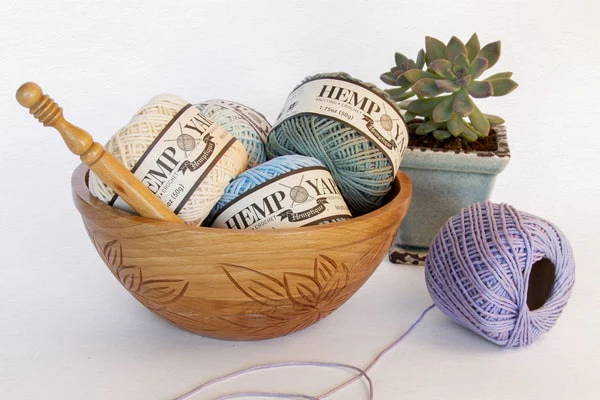
Texture & Drape
The texture of yarn is important because it determines the final look and feel of your finished item and it can range from smooth to highly textured.
- Smooth yarns, like silk or cotton, produce clean, uniform weaves with even and crisp surface. They are ideal for items with polished look, like table linens and other decorative home textiles
- Textured yarns, like boucle, Merino, or Mohair, have more rough and rustic feel, because their surface is bumpy. These threads are used to add dimension and texture to your weave.
Drape is the way fabric behaves or hangs. It refers to fluidity and how the textile moves or falls when worn or hanged.
- To craft flowy fabrics, it’s best to use wool, silk, or Alpaca. They are soft and pliable and have beautiful drape.
- For more structured and sturdy pieces that hold their shape well, like rugs or table runners, use rigid fibers like linen, cotton, or certain synthetics.
Recommended Product: Hemp Yarn
This high-grade yarn is manufactured from the finest hemp fibers, which are notable for their remarkable durability, strength and high resistance to breaking under tension. Our multi-plied, heavy worsted Hemp yarn is made of 65% cotton and 36% hemp, making it soft, but durable, and easy to work with. It will make your weaving process much more enjoyable. It’s offered in 6 different colors, and can be used for crocheting, knitting, jewelry making, string art, scrapbooking, present wrapping, and many other crafts.
- Weight: Heavy worsted
- Length & size: 66yds (60m); 1.75oz (50g)
- Knitting needles: 5mm (8 US) (6 UK)
- Crochet hook size: 5.5mm
- Colors: Mint, Periwinkle, Sky Blue, Natural, Dusty Pink & Moss Green
- Care: Machine wash warm (40C), Tumble dry low, Do not iron
Check Out Our Knowledge Base
If you are looking to find out more about various crafts and need ideas on what items to make, visit our Knowledge base section. We have gathered guides for beginners, video tutorials, references, and project ideas for various ages, regardless of your skill level. The info provided here serves to help anyone looking to explore new hobbies and unleash their creativity using supplies such as yarn, cord, or threads made of natural fibers. We’ve covered crafts like weaving, knitting, crocheting, jewelry making, macrame, and many others. It also includes posts on Valentine’s Day, Easter, Christmas, Thanksgiving and other holidays.


